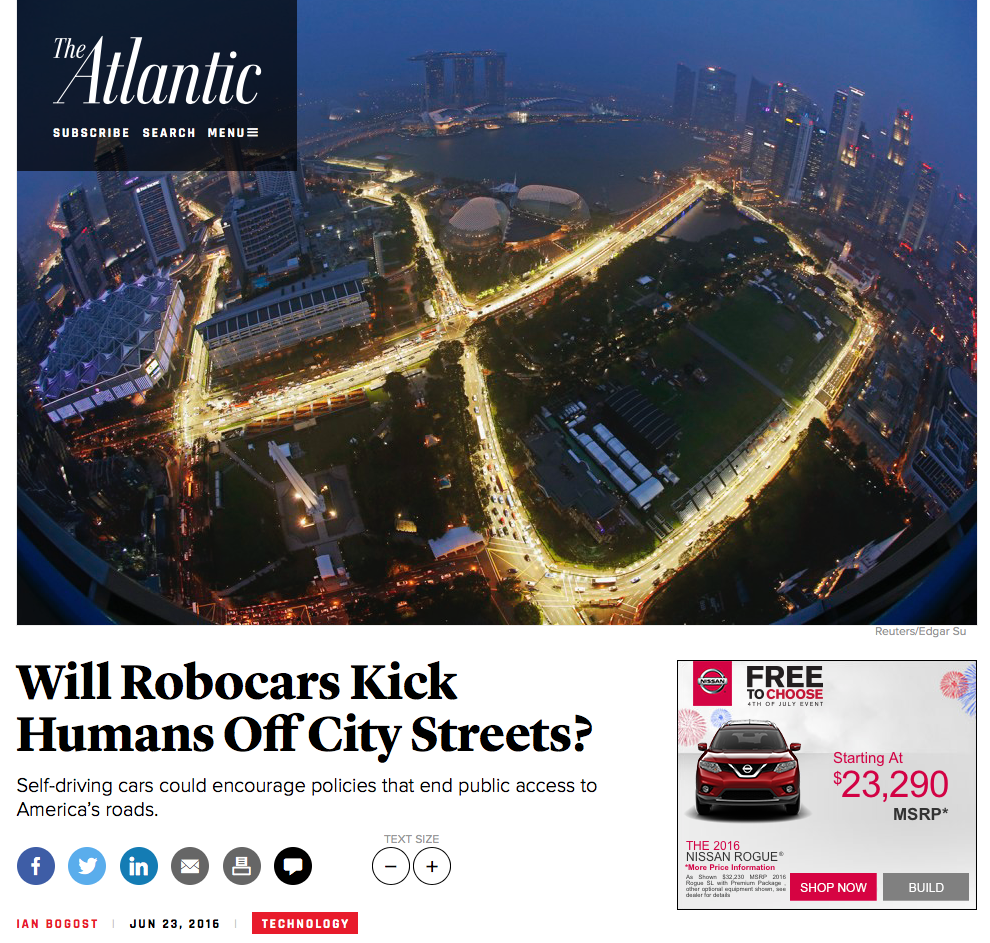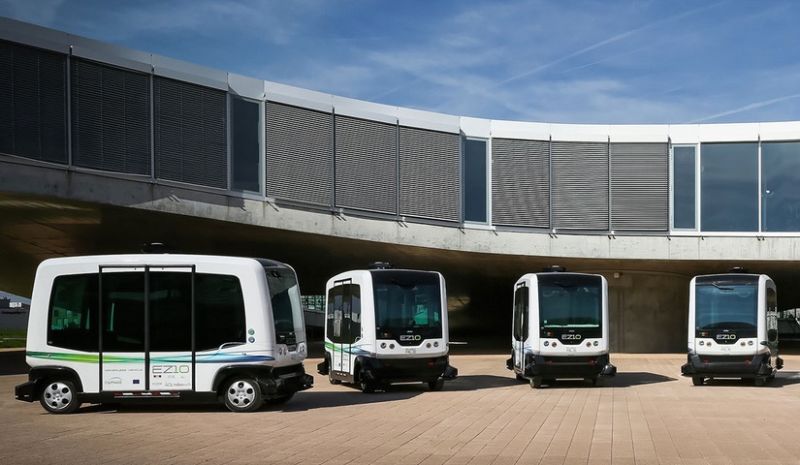For three years I’ve been writing at least once a week about self-driving cars and I’ve recently noticed a shift in popular opinion. The wide-eyed optimism of seeing Google’s cute-as-a-button robot bopping unassisted around a parking lot has been replaced by some ambiguous, malicious, unknowable entity.
It doesn’t have to be this way. (Image: Total Recall)
A shapeshifting Smoke Monster that ruins our lives and ravages our neighbourhoods in a blur of carbon emissions and tail lights. Suddenly, we’ve started to appropriate the term “self-driving cars” to represent all we fear about our transportation future.
We’re not merely concerned that “self-driving cars” are being programmed to kill us. Just in the last week we’ve also been told that “self-driving cars” will cause sprawl, “self-driving cars” will turn streets into robot slot-car tracks unfit for humans and “self-driving cars” will suddenly become sentient and start smashing into each other in some dystopian hacking scenario.

Until then, buy a car! (Image: The Atlantic)
Then there are puzzling arguments like this Los Angeles Times op-ed which worries that Angelenos are going to waste their money on a big public transit initiative because, in a few years, we’ll all have — you guessed it — “self-driving cars”.
More than once in the last few years I’ve been accused of being too bullish on this technology (it’s OK, I’ve been called worse). The argument is that we don’t know enough about self-driving cars to know if they’re “right” for us. But the thing is, we do know. The lethal combination of humans navigating vehicles kills 40,000 people on US streets every year. This is a technological solution which will definitely reduce that number (and one that’s the opposite of being programmed to kill you, something Google has actually addressed quite eloquently). This is not something that some Pollyanna blogger is preaching from her rose-coloured laptop screen. The people who are making these decisions for our streets — for saving the lives of our loved ones — also think this is a very good technological solution. And now they have a plan for how to do it.
This week, the US National Association of City Transportation Officials (NACTO) made what is probably the most important statement on autonomous vehicles yet. I don’t expect most people to know what NACTO is, but most US cities are members — it’s a coalition of transportation officials from across the US who work together to share best practices for all US transit agencies. The chair is Janette Sadik-Khan, the former DOT head from New York City, who has been largely credited with making the city’s streets safer, more efficient and much more enjoyable for all their users. She is probably the one person in the US you should listen to if you want an option for how to fix transportation in a US city. Here’s what she said about self-driving cars: “Autonomous vehicles offer a once-in-a-lifetime opportunity to reset our streets and address the fundamental issues of traffic safety, congestion, and mobility as our cities grow ever larger.”
This idea of “reset” is such a powerful term — and it’s exactly what roads need. We need a way to overwrite decades of deploying misguided technology which has made streets dangerous, severed neighbourhoods and not-so-slowly destroyed the planet. That’s why NACTO recommends that the US move directly to shared, fully autonomous vehicles — the kinds without steering wheels — which move at a maximum of 40km/h when there are people around (the magic number to keep those people alive, should they ever be hit). And it’s not just about the vehicles. NACTO also has several recommendations for completely changing the way streets, freeways and connections to existing transit systems are designed to accommodate for this new transportation behaviour — making cities better in the process.
The NACTO recommendations show that autonomous technology is actually part of something bigger — a fundamental shift in the way we live. “Self-driving cars” aren’t going to ruin your city. “Self-driving cars” aren’t going to cause sprawl. “Self-driving cars” aren’t going to make traffic worse. (Besides, regular cars already did all that.) The only thing that’s going to happen is that a new technology is going to slowly change your daily life, just like new technology always does. But the difference here is that these changes are not just playing out on a smartwatch strapped to your wrist, these are changes being made to public streets. Which means these are changes which will occur through very incremental (and probably very boring and very wonky) policy changes — the result of leadership that people can choose to support. And choosing actually does matter, as the entire world was shocked to learn this week.

What the first “self-driving cars” in the US will look like. Dystopia, right? (Image: EasyMile)
On the same day that NACTO released its recommendations, the USDOT announced the city it had picked, out of 78 applicants, to become a real-world testing ground for new transportation technology like autonomous vehicles. The winner was Columbus, Ohio. And guess what the first government-funded self-driving car program is going to be? A series of shared autonomous shuttles that can help get people who don’t have cars out of their economically and infrastructurally underdeveloped neighbourhoods and deliver them safely to their jobs and schools. That includes using shuttles to get parents to critical medical appointments that might help reverse the city’s troubling infant mortality rate. Can someone spin that into a dystopian outcome? Because I can’t. These are “self-driving cars” that aren’t just preventing deaths — they actually might end up saving lives.
